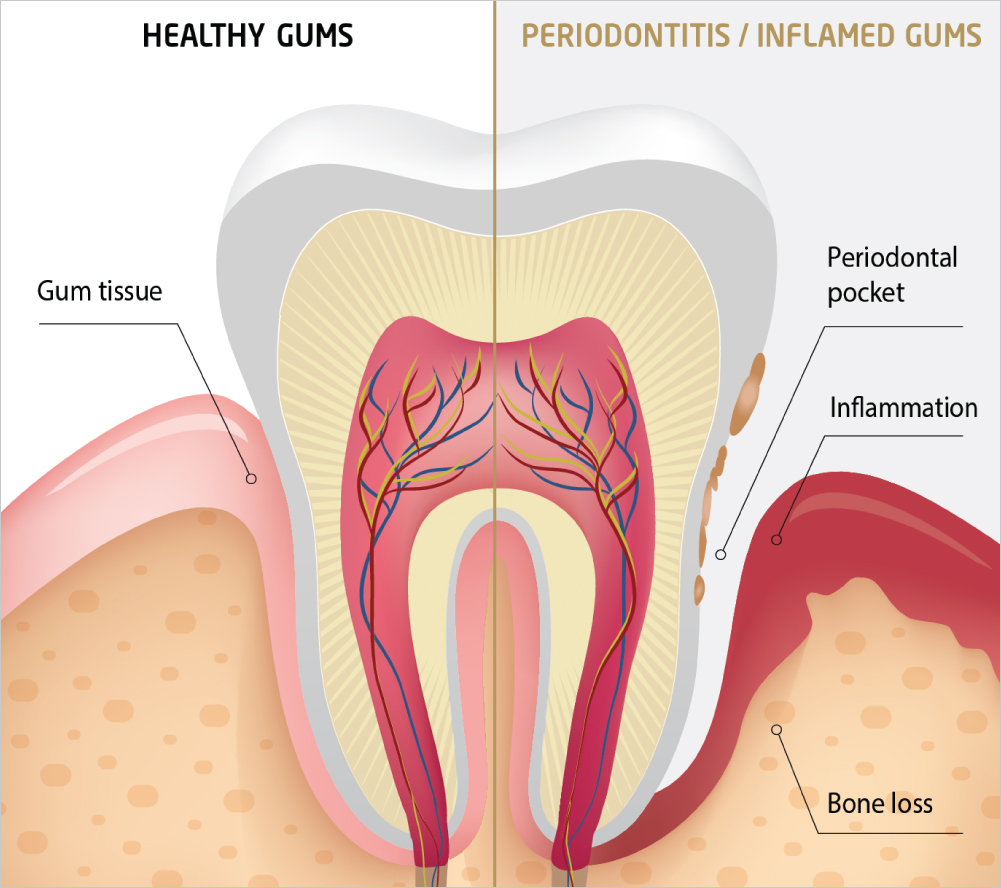Your dentist can tell if you have gum disease by gently probing the space between your tooth and your gum. In a healthy tooth, the probe does not reach very far under the gum. If the probe reaches further under the gum into a "periodontal pocket," this shows that the gums are beginning to swell and detach from the tooth. This is caused by bacteria that generate inflammation, or gingivitis. Gingivitis is the early stage and when untreated it is usually proceeding to full-blown gum disease. If the probe sinks deeper into the pocket, this is evidence of more advanced gum disease, called periodontitis.
The symptoms below are early signs of gum disease that you may have experienced:
- Tender or painful gums
- Bright red gums
- Swollen gums
- Bleeding gums
- Pockets
- Loose teeth
- Shifting teeth
- Bad breath
If you experience any of these symptoms, you should seek professional advice from your dentist.
Common Treatments If you have been diagnosed with gum disease, your dentist or periodontist will perform root surface debridement (RSD), to clean plaque and tartar from your teeth and roots. RSD can remove much of the plaque below your gum line where bacteria cause infection. However, RSD alone is not always enough to kill all the bacteria that cause gum disease.
The anatomy of the gum and other mechanical obstacles though limit the efficacy of RSD in pockets that are more than 5 mm deep. In pockets this deep, it is nearly impossible to completely eradicate the bacterial flora and inflammation.
Your dentist may have suggested PerioChip, a locally administered antibacterial medicine that is NOT an antibiotic. PerioChip contains chlorhexidine digluconate (CHX) in a soft gel chip and is inserted into the pocket. It slowly releases this effective antibacterial antiseptic into the pocket to kill any bacteria left behind after RSD, and keeps working over the next ten days. And it does not need to be removed as it dissolves naturally.
Antibiotic treatments are sometimes recommended, but these carry the risk of antibiotic resistance. Also, treating an infection without first examining it the bacteria for antibiotic sensitivity may render the treatment useless. That is why PerioChip is a current gold standard adjunct therapy preferred by most doctors to treat gum disease.




